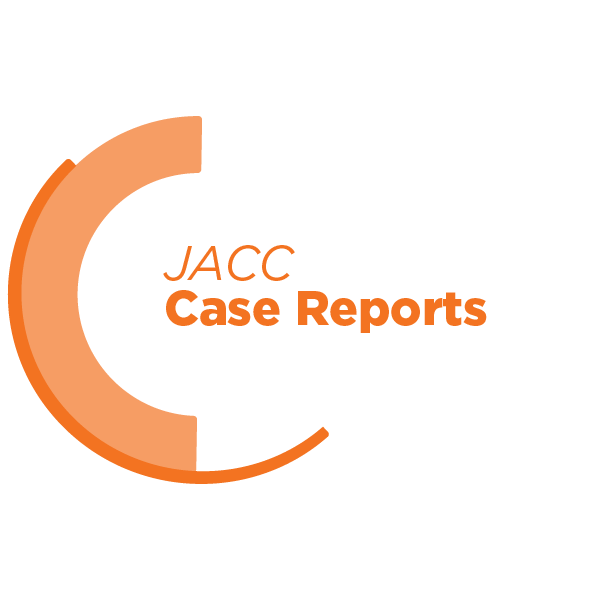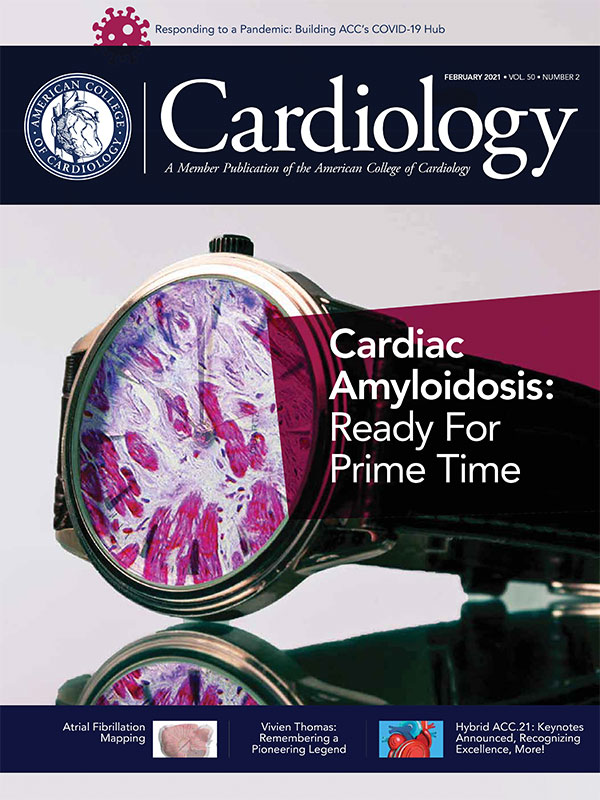JACC in a Flash
Featured topics and Editors' Picks from all of ACC's JACC Journals.

Translational Perspective on SGLT2 Inhibitors in CKD and HF
Based on the results of several clinical trials, SGLT2 inhibitors "clearly merit" a key role in the management of patients with chronic kidney disease and heart failure, according to a translational perspective published in JACC: Basic to Translational Science.
David Z.I. Cherney, MD, PhD, and Subodh Verma, MD, PhD, discuss the results of the DAPA-CKD trial and how it showed the renal benefits of SGLT2 inhibitors are independent of glucose-lowering, and emphasize the urgency to adopt these therapies in patients with appropriate indications.

Does Evolocumab Reduce the Risk of Complex Coronary Disease Requiring Revascularization?
Adding evolocumab to statin therapy may significantly reduce the risk of developing complex coronary disease requiring revascularization, including complex PCI and CABG individually, according to a study published in the Journal of the American College of Cardiology.
Using data from the FOURIER trial, Kazuma Oyama, MD, PhD, et al., assessed 1,724 patients who underwent coronary revascularization, including 1,482 who underwent PCI, 296 who underwent CABG and 54 who underwent both. Complex revascularization was performed in 632 (37%) patients.

CTO PCI Techniques May Be Transferrable to Peripheral Vascular System
Techniques used in chronic total occlusion (CTO) PCI may be transferrable to the peripheral vascular system, according to a case published in JACC: Case Reports.
Conor McQuillan, MBBCh, et al., describe a case of recanalization of an occluded radial artery that was dissected and reentered using CTO techniques before revascularization. The patient was a 71-year-old female referred for coronary angiography for angina. The patient had history of ischemic heart disease, diabetes and hypertension and was overweight. She previously had PCI via radial and femoral access and experienced femoral vascular complications.

Conduction Abnormalities Requiring PPM Common After TAVR, State-of-the-Art Review Finds
As TAVR is increasingly used as an alternative to surgical aortic valve replacement (SAVR), conduction abnormalities, such as new onset left bundle branch block (LBBB) and high-grade atrioventricular block (AVB), requiring permanent pacemaker (PPM) implantation remain common following TAVR, according to a state-of-the-art review published in JACC: Cardiovascular Interventions.
Yasser Sammour, MD, et al., summarize findings of a systematic computerized search to identify randomized clinical trials, observational studies, multicenter registries, systematic reviews and meta-analyses through June 2020 that reported incidence, predictors and outcomes of conduction abnormalities requiring PPM after TAVR.

Study Looks at AVR in Low-Risk Patients With SAS
Nearly one-half of low-risk patients with severe aortic stenosis (SAS) undergoing surgical aortic valve replacement (SAVR) have at least one of the criteria for exclusion from randomized trials comparing TAVR vs. SAVR. In addition, clinical outcomes may be better than predicted by surgical risk scores, except for patients requiring concomitant mitral or tricuspid valve intervention, according to a study published in the Journal of the American College of Cardiology.
Alberto Alperi, MD, et al., looked at 6,772 patients in a single center, who had SAS and underwent SAVR between 2000 and 2019. Of these patients, 5,310 (78.4%) exhibited a low-surgical risk (mean Society of Thoracic Surgeons score, 1.94±0.87%).

Does Short-Term Air-Pollution Exposure Increase MI Mortality?
Short-term exposure to particulate matter with an aerodynamic diameter ≤2.5 μm (PM2.5), particulate matter with an aerodynamic diameter ≤10 μm (PM10) and nitrogen dioxide may be associated with increased risk of myocardial infarction (MI) mortality, according to a study published in the Journal of the American College of Cardiology.
Yuewei Liu, MD, PhD, et al., investigated the association of short-term exposure to air pollution across a wide range of concentrations with MI mortality by examining 151,608 MI death cases in the Hubei province of China from 2013 to 2018. Based on each case's home address, exposure to PM2.5, PM10, sulfur dioxide, nitrogen dioxide, carbon monoxide, and ozone on each of the case and control days was assessed as the inverse distance-weighted average concentration at neighboring air quality monitoring stations.

Is Home BP Monitoring the Best Approach For Diagnosing HTN?
One week of home blood pressure (BP) monitoring may be more reliable and more strongly associated with left ventricular mass index (LVMI) vs. office BP or ambulatory BP, suggesting that home BP monitoring may be the best approach for diagnosing hypertension (HTN) and its associated risk of cardiovascular disease, according to a study published in the Journal of the American College of Cardiology.
Joseph E. Schwartz, PhD, et al., assessed the reliability of office BP, home BP and ambulatory BP and evaluate their associations with LVMI in untreated patients in a community-based observational study. The 408 participants had their office BP assessed at three visits, and completed three weeks of home BP, two 24-h ambulatory BP recordings and a two-dimensional echocardiogram.
Clinical Topics: Acute Coronary Syndromes, Arrhythmias and Clinical EP, Cardiac Surgery, Cardiovascular Care Team, COVID-19 Hub, Dyslipidemia, Heart Failure and Cardiomyopathies, Invasive Cardiovascular Angiography and Intervention, Noninvasive Imaging, Prevention, Valvular Heart Disease, Atherosclerotic Disease (CAD/PAD), ACS and Cardiac Biomarkers, Implantable Devices, EP Basic Science, Aortic Surgery, Cardiac Surgery and Arrhythmias, Cardiac Surgery and Heart Failure, Cardiac Surgery and SIHD, Cardiac Surgery and VHD, Lipid Metabolism, Nonstatins, Novel Agents, Statins, Acute Heart Failure, Heart Failure and Cardiac Biomarkers, Interventions and ACS, Interventions and Coronary Artery Disease, Interventions and Imaging, Interventions and Structural Heart Disease, Angiography, Nuclear Imaging, Hypertension
Keywords: ACC Publications, Cardiology Magazine, Acute Coronary Syndrome, Air Pollution, Air Travel, Albumins, Algorithms, Angina Pectoris, Aorta, Aortic Valve, Aortic Valve, Aortic Valve Stenosis, Atrioventricular Block, Biomarkers, Blood Pressure, Blood Pressure Monitoring, Ambulatory, Bundle-Branch Block, Bundle-Branch Block, Carbon Dioxide, Carbon Monoxide, Cardiovascular Diseases, Catheters, Cholesterol, LDL, Cholesterol, LDL, Consensus, Coronary Angiography, Coronary Artery Bypass, Coronary Artery Disease, Cost-Benefit Analysis, COVID-19, Creatinine, Diabetes Mellitus, Dilatation, Dissection, Antibodies, Monoclonal, Glomerular Filtration Rate, Glucose, Heart Failure, Heart Valve Prosthesis, Hydroxymethylglutaryl-CoA Reductase Inhibitors, Hypertension, Incidence, Kidney, Mercury, Myocardial Infarction, Myocardial Infarction, Nephrology, Nitrogen Dioxide, Office Visits, Overweight, Ozone, Pacemaker, Artificial, Pacemaker, Artificial, Pandemics, Particulate Matter, Percutaneous Coronary Intervention, Policy, Primary Health Care, Radial Artery, Registries, Renal Insufficiency, Chronic, Renin-Angiotensin System, Reproducibility of Results, Risk Factors, Risk Reduction Behavior, Sodium-Glucose Transporter 2, Stroke, Stroke Volume, Sulfur Dioxide, Surgeons, Telemetry, Transcatheter Aortic Valve Replacement, Tricuspid Valve
< Back to Listings

